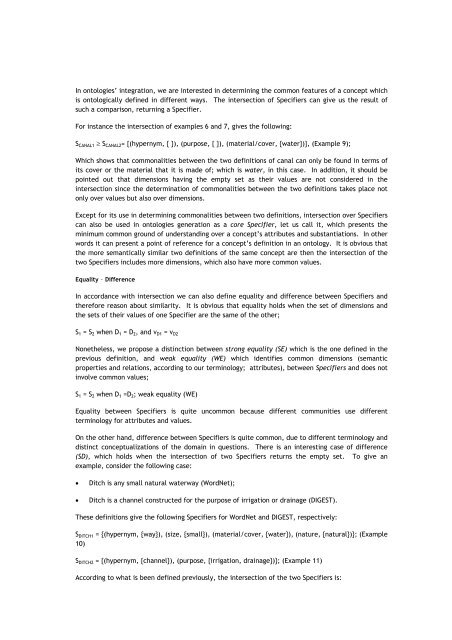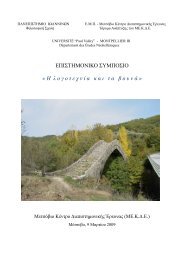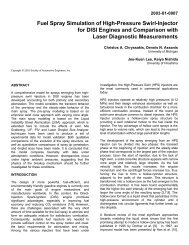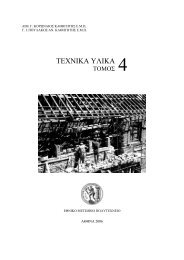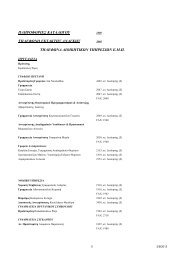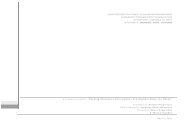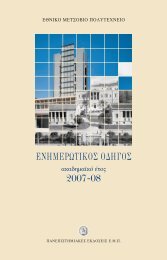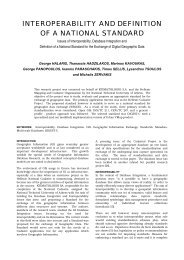CONTEXT IN GEOGRAPHIC KNOWLEDGE REPRESENTATION
CONTEXT IN GEOGRAPHIC KNOWLEDGE REPRESENTATION
CONTEXT IN GEOGRAPHIC KNOWLEDGE REPRESENTATION
Create successful ePaper yourself
Turn your PDF publications into a flip-book with our unique Google optimized e-Paper software.
In ontologies’ integration, we are interested in determining the common features of a concept whichis ontologically defined in different ways. The intersection of Specifiers can give us the result ofsuch a comparison, returning a Specifier.For instance the intersection of examples 6 and 7, gives the following:S CANAL1 ≥ S CANAL2 = {(hypernym, { }), (purpose, { }), (material/cover, {water})}, (Example 9);Which shows that commonalities between the two definitions of canal can only be found in terms ofits cover or the material that it is made of; which is water, in this case. In addition, it should bepointed out that dimensions having the empty set as their values are not considered in theintersection since the determination of commonalities between the two definitions takes place notonly over values but also over dimensions.Except for its use in determining commonalities between two definitions, intersection over Specifierscan also be used in ontologies generation as a core Specifier, let us call it, which presents theminimum common ground of understanding over a concept’s attributes and substantiations. In otherwords it can present a point of reference for a concept’s definition in an ontology. It is obvious thatthe more semantically similar two definitions of the same concept are then the intersection of thetwo Specifiers includes more dimensions, which also have more common values.Equality – DifferenceIn accordance with intersection we can also define equality and difference between Specifiers andtherefore reason about similarity. It is obvious that equality holds when the set of dimensions andthe sets of their values of one Specifier are the same of the other;S 1 = S 2 when D 1 = D 2 , and v D1 = v D2Nonetheless, we propose a distinction between strong equality (SE) which is the one defined in theprevious definition, and weak equality (WE) which identifies common dimensions (semanticproperties and relations, according to our terminology; attributes), between Specifiers and does notinvolve common values;S 1 = S 2 when D 1 =D 2 ; weak equality (WE)Equality between Specifiers is quite uncommon because different communities use differentterminology for attributes and values.On the other hand, difference between Specifiers is quite common, due to different terminology anddistinct conceptualizations of the domain in questions. There is an interesting case of difference(SD), which holds when the intersection of two Specifiers returns the empty set. To give anexample, consider the following case:• Ditch is any small natural waterway (WordNet);• Ditch is a channel constructed for the purpose of irrigation or drainage (DIGEST).These definitions give the following Specifiers for WordNet and DIGEST, respectively:S DITCH1 = {(hypernym, {way}), (size, {small}), (material/cover, {water}), (nature, {natural})}; (Example10)S DITCH2 = {(hypernym, {channel}), (purpose, {irrigation, drainage})}; (Example 11)According to what is been defined previously, the intersection of the two Specifiers is:


